Spring for most people is associated with beautiful changes, sun and freshness, but some people are forced to perceive this time of year not so rosy. The reason for this is the spring allergy, which overshadows life with annoying symptoms that create serious discomfort. Many people have a reaction to plant pollen - hay fever. This type of allergy is seasonal in nature, as it is tied to the flowering of a particular plant.
Causes of spring allergies
About 200 years ago, it was believed that spring allergies were related to hay. The English physician Bostok reported that there was some kind of hay fever. This opinion was used in medicine for another 50 years, after which it was proved that hay had absolutely nothing to do with it, since the symptoms of spring allergies are manifested due to the effects of plant pollen on the body. Despite this, the term "hay fever" can still be heard frequently today.
Nature provides a complex process for the reproduction of plants. The pollen grain encodes the genetic information about the plant as a whole, which is transmitted during pollination. For a certain reason, the human body begins to perceive pollen as a carrier of the genetic code that is harmful to the body. In the spring season, a lot of plants are pollinated, so there are many potential allergens in the air.
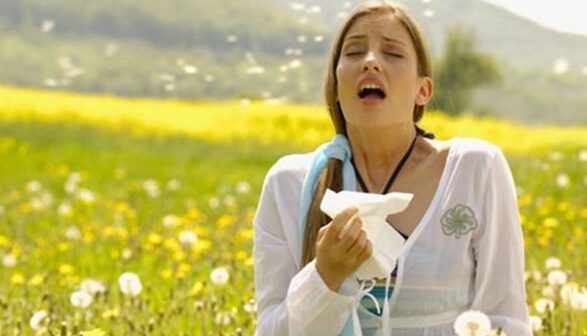
When the body begins to produce antibodies against pollen particles, the first symptoms of an allergy appear. It is an immune disease. In addition, the disease is often inherited. So, if one of the parents has an allergy, then there is a high probability of a reaction to one of the allergens in the child, but if both parents suffer from allergic reactions, then the likelihood of their manifestation in the baby doubles.
The most common plant allergens include:
- acacia;
- Hazel;
- Alder;
- Oak;
- Elm;
- Ash;
- birch;
- Maple.
In most cases, the symptoms of spring allergies subside by the end of May, but not always. It is worth consulting a doctor about how to reduce the intensity of symptoms. For example, if you are allergic to birch pollen, it is recommended to refrain from raw carrots, red varieties of apples, kiwi, peaches and apricots in advance. But if a person reacts to hazel, then hazelnuts are contraindicated for him.
Residents of dusty megacities most often suffer from various types of allergies. This is due to the environmental factor, toxic emissions into the air, dustiness of the atmosphere. If the disease is hereditary, then it manifests itself for the first time in childhood. By the age of seven, it is usually already clear that the child has hay fever.
Additional factors that contribute to the development of allergies are:
- Weakened immunity;
- Improper nutrition;
- Low stress resistance.
Symptoms
Often the symptoms of spring allergies are confused with colds or reactions to another allergen. Differentiation is carried out on the basis of the seasonality of the manifestation of signs. It should be understood that their intensity can be individual. If, upon contact with pollen, a person experiences the following symptoms, then it's time to go to an appointment with an allergist:
- Runny nose, nasal congestion;
- Dry cough;
- The presence of conjunctivitis (inflammation of the mucous membrane of the eyes, when it swells, itches, turns red, becomes dry, painful);
- Painless sore throat;
- Itching in the nose, ears;
- Possible skin manifestations in the form of urticaria, dry skin, peeling (rarely found in spring allergies).
It is not necessary that the patient will manifest all the complex of symptoms at once. For some, they occur singly or in various combinations. When it is windy and sunny outside, the symptoms become more intense, but after rain they weaken. Allergy sufferers feel better indoors (this is one of the main differences between an allergic reaction and SARS). At the first symptoms of spring allergies, you should immediately consult a doctor, as the disease is fraught with complications.
In a certain part of people, it is not pollinosis that manifests itself, but an allergy to the spring sun. If you ignore the disease, then it begins to be accompanied by complicated conditions. First, there are attacks of bronchial asthma. Since this condition significantly weakens the immune system, a person is more likely to get sick, and infections easily penetrate the body.
Diagnostics
Many people think that spring allergies are not a serious disease. This is a complete fallacy. If left untreated, the patient begins to jump in body temperature, myocarditis, gastritis develops, and the immune system weakens and cannot fully resist harmful microorganisms. As a result, in parallel with allergic ailments, another disease of a viral or bacterial nature may develop, which will seriously complicate further therapy.
Pollinosis is diagnosed simply. Doctors simply compare it with the flowering time of certain plants, and then carry out skin allergy tests outside the flowering season. The method of immunological analysis of blood also remains relevant. It is important to contact the allergy centers in a timely manner, without waiting for complications. To do this, it is worth analyzing the symptoms and differentiating them from signs of colds.
Spring Allergy Treatment
Of course, the ideal method of treating the disease is to change the place of residence for the period when the allergen plant blooms. You need to leave where this plant simply does not exist or the flowering season does not coincide with your region. However, not everyone can afford such a luxury. Most allergy sufferers are tied to their place of residence by work or study.
Pollen allergy treatment should be under the guidance of a powerful allergist. The technique is selected individually. If you need urgent expert advice, please contact us. Our staff will give you a detailed answer on your situation.
Allergies are treated with different methods, but the most popular ones are:
- Preventive immunotherapy
This technique shows high efficiency in 60-75% of cases. It consists in the following: the patient is injected with small doses of the allergen outside the flowering season. Gradually, the amount of the injected substance increases, and the body develops resistance to it. Such treatment lasts 1-1.5 months and requires regular visits to the allergist's office.
- Allergen Protection
Of course, it is ideal with this technique to completely eliminate contact with the allergen, but this is not always possible. The use of home air purifiers, mosquito nets on windows is becoming relevant. Airing during the flowering period of a dangerous plant is better not to carry out, but to walk only in calm, wet weather. Immediately after the walk, you should change your clothes and wash your clothes, as pollen also settles on them. When outdoors, be sure to protect your eyes with sunglasses.
- Drug treatment of allergies
Such therapy is carried out symptomatically. First of all, it consists of antihistamines. By taking such medicines against spring allergies, you can get rid of the symptoms (rhinitis, conjunctivitis) or at least significantly alleviate the symptoms. Among modern anti-allergenic drugs, Suprastin, Tavegil, Claritil have proven themselves well. Before taking any medication, you should consult with your doctor.
Preventive measures
- It is necessary to avoid walking from 5 to 10 in the morning, as this is the peak time of dusting (going outside should be moved if possible);
- It is better to walk in damp weather, and not in the sun, while the pollen is nailed to the ground with moisture;
- During forced exits to fresh air (for example, on the way to work), it is better to use a gauze bandage;
- Decorative cosmetics exacerbate the course of spring allergies, so its use is minimized;
- After returning to the premises, clothes are immediately changed;
- Pollen is on animals that are outside, so if they live in a house, they are bathed;
- During the flowering period of the allergen, linen is not dried in the open air.
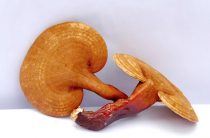


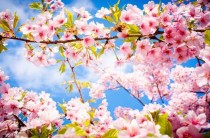

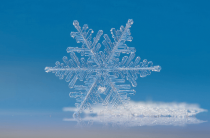
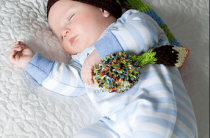

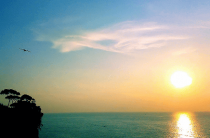







I saved myself from allergies in the spring with halotherapy. Salt cave. I went to the Halocenter for 10 sessions, it became easier.